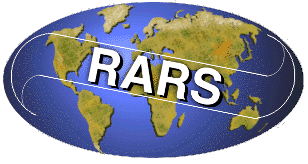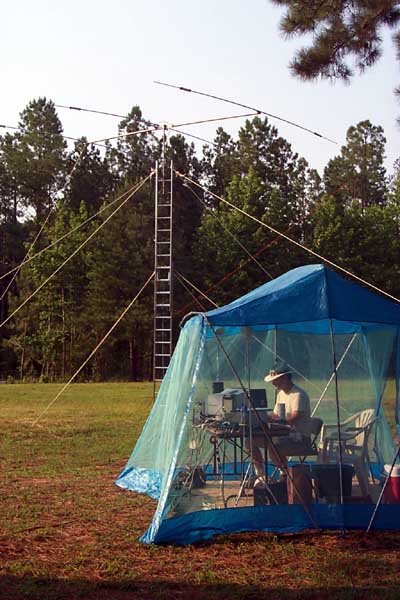
|
Radio Society for Field Day |
 |
|
 Field Day is three activities rolled into
one: Field Day is three activities rolled into
one:
2. The 24 hour operation is held in the form of a contest. Amateur Radio has many contests throughout the year. Hams participating in contests attempt to make as many brief contacts with other ham stations as possible within a limited period of time. Each contact lasts only a few seconds, and some basic information is passed. In Field Day, that information includes the station location (by ARRL "Section" - we are in the North Carolina Section, but some other states have more than one Section), and class (number ot transmitters operating at the same time, and a few other considerations). A good group of operators can make more than 1000 contacts from a single station on Field Day. The contest aspect of Field Day is important because it generates enthusiasm and brings thousands of hams out to participate. Amateur Radio emergency planners hold several other strictly emergency-oriented exercises each year, but they attract a much smaller group of hams who specialize in emergency communications. 3. For many hams, Field Day is a "camp-out". They bring tents, food and everything they need to be completely self-contained for the 24 hour period, or longer. No late-nite runs to McDonalds for a burger fix for them!
Field Day is always held the fourth full weekend in June. Directions: Take US 1 south to the New Hill exit (6 miles past the NC. 55 exit). Turn left on New Hill-Holloman Road, then immediately turn left on Friendship road. Go one mile to 4501 Friendship Road, and look for all the activity back in the fields. See a map and details here. But Amateurs discovered early in their history that they had a unique ability to provide communications in remote areas during emergencies. Early commercial and military radio focused on maritime communication, so during land-based disasters, hams stepped in to fill the gap. Reports begin in 1919 and document ham radio as the only communications available during hurricanes, blizzards and earthquakes through the 20's. 919-380-9944 |